Abstract
1. Comparisons have been made between rats anaesthetized with pentobarbitone and Saffan (Glaxovet), of respiratory and cardiovascular changes evoked by (1) brief stimulation of carotid body chemoreceptors (c.b.); (2) systemic hypoxia induced by N2 breathing for 5 s; (3) brief unloading of peripheral chemoreceptors with dopamine; and (4) O2 breathing for 10 s. The results are discussed in relation to responses reported in other species. 2. Under pentobarbitone, c.b. stimulation evoked hyperventilation, tachycardia, and vasoconstriction in hindlimb muscle and renal and mesenteric circulation. The effects of vagotomy and/or of holding ventilation constant indicated that the primary cardiac response to c.b. stimulation was bradycardia which could be overcome by tachycardia, due to a reflex mediated by pulmonary stretch receptors with vagal afferents and to other secondary effects of hyperventilation. However, reflex vasodilatation initiated by hyperventilation did not modulate the chemoreceptor-induced peripheral vasoconstriction. 3. Under light pentobarbitone, N2 evoked a similar pattern of response to c.b. stimulation, except that the tachycardia apparently also reflected the known effects of increased central inspiratory drive and central nervous hypoxia on cardiac vagal and sympathetic activity. However, under deep pentobarbitone or after guanethidine, N2 induced generalized vasodilatation. It is proposed that these responses reflected the local vasodilator actions of hypoxia. 4. Under light Saffan anaesthesia, both c.b. stimulation and N2 evoked the autonomic components of the alerting stage of the defence response which includes tachycardia and vasodilatation in hindlimb muscle, which are not secondary to hyperventilation, with renal and mesenteric vasoconstriction, pupillary dilatation and exophthalmus. However, under deep Saffan anaesthesia, c.b. stimulation and N2 produced the patterns of response they each evoked under deep pentobarbitone. It is proposed that light Saffan anaesthesia allows chemoreceptor stimulation to activate the defence areas and that under such conditions the primary response to c.b. stimulation and direct effects of hypoxia may be overridden. 5. Under pentobarbitone or Saffan, the hypoventilation induced by I.V. dopamine and by O2 indicated that almost 50% of eupnoeic ventilation was due to drive from peripheral chemoreceptors. This drive apparently played no significant role in setting the baseline level of heart rate, but could account for 10% of total peripheral resistance and of the baseline level of arterial pressure under Saffan, rather less under pentobarbitone.
Full text
PDF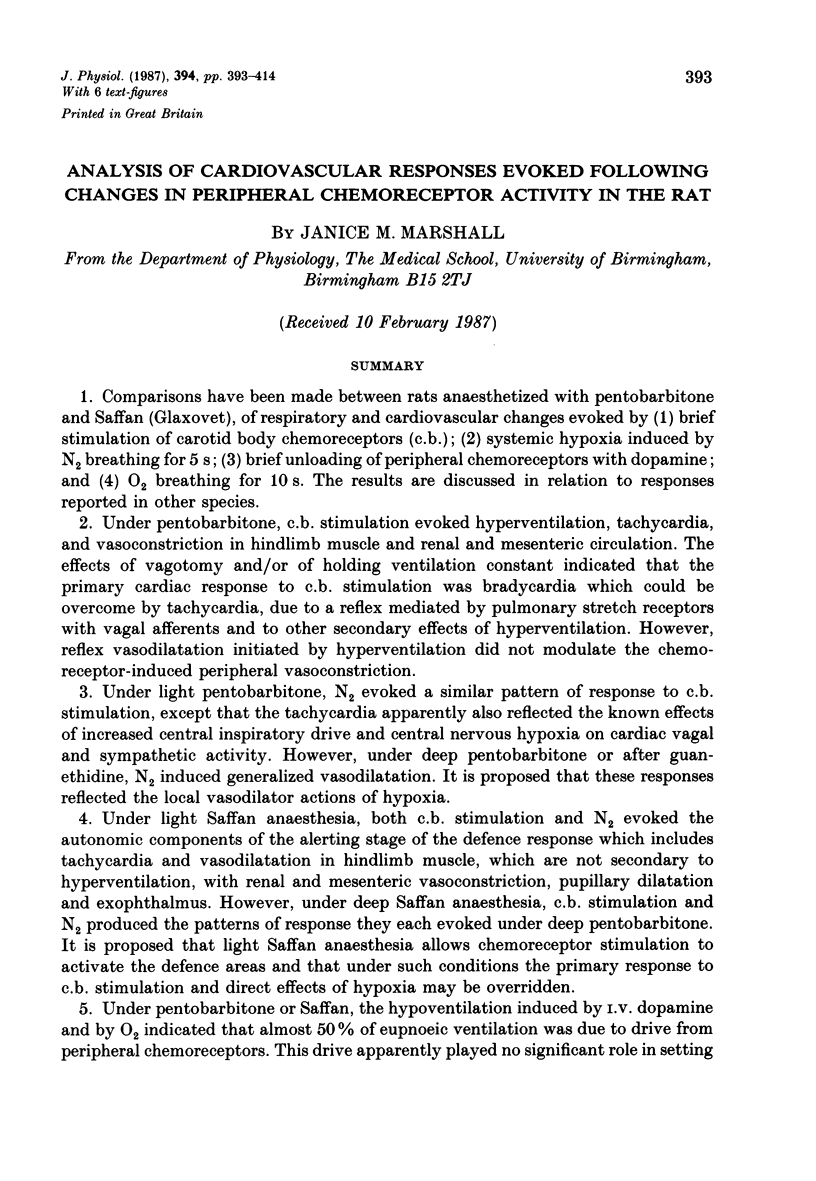
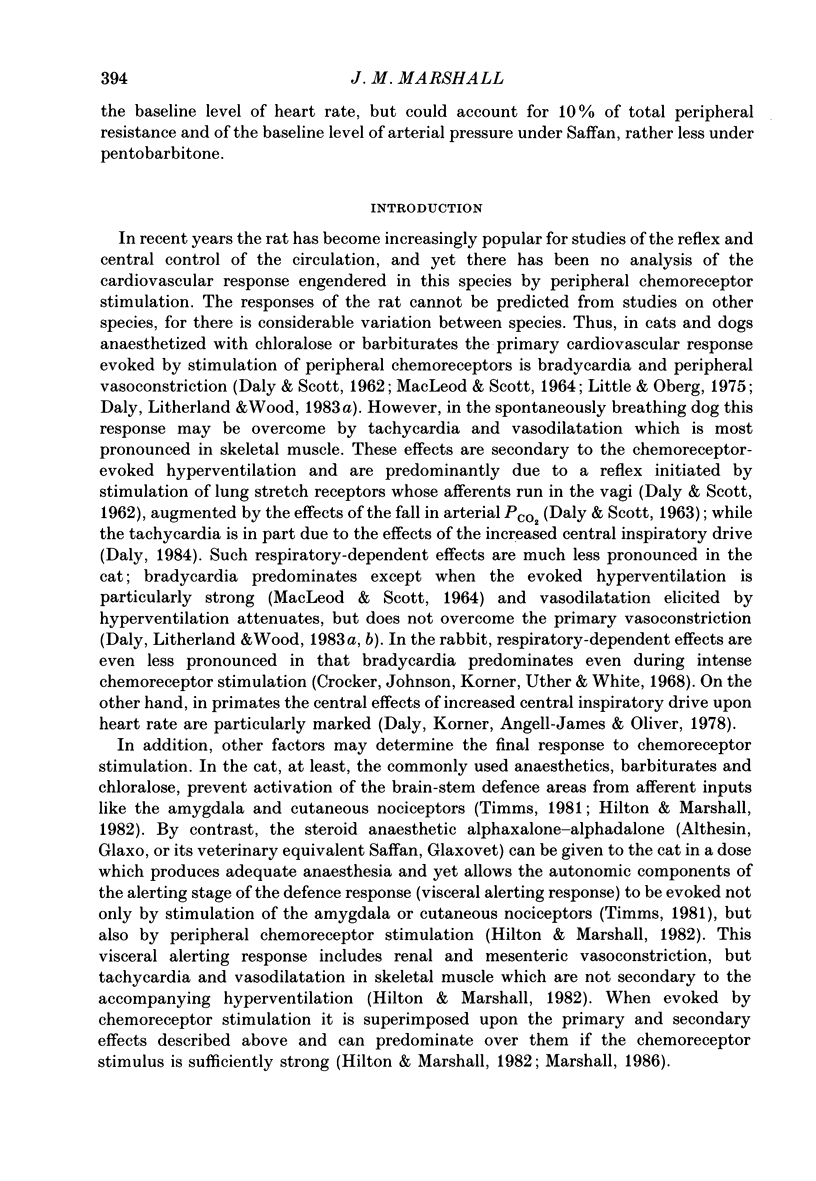
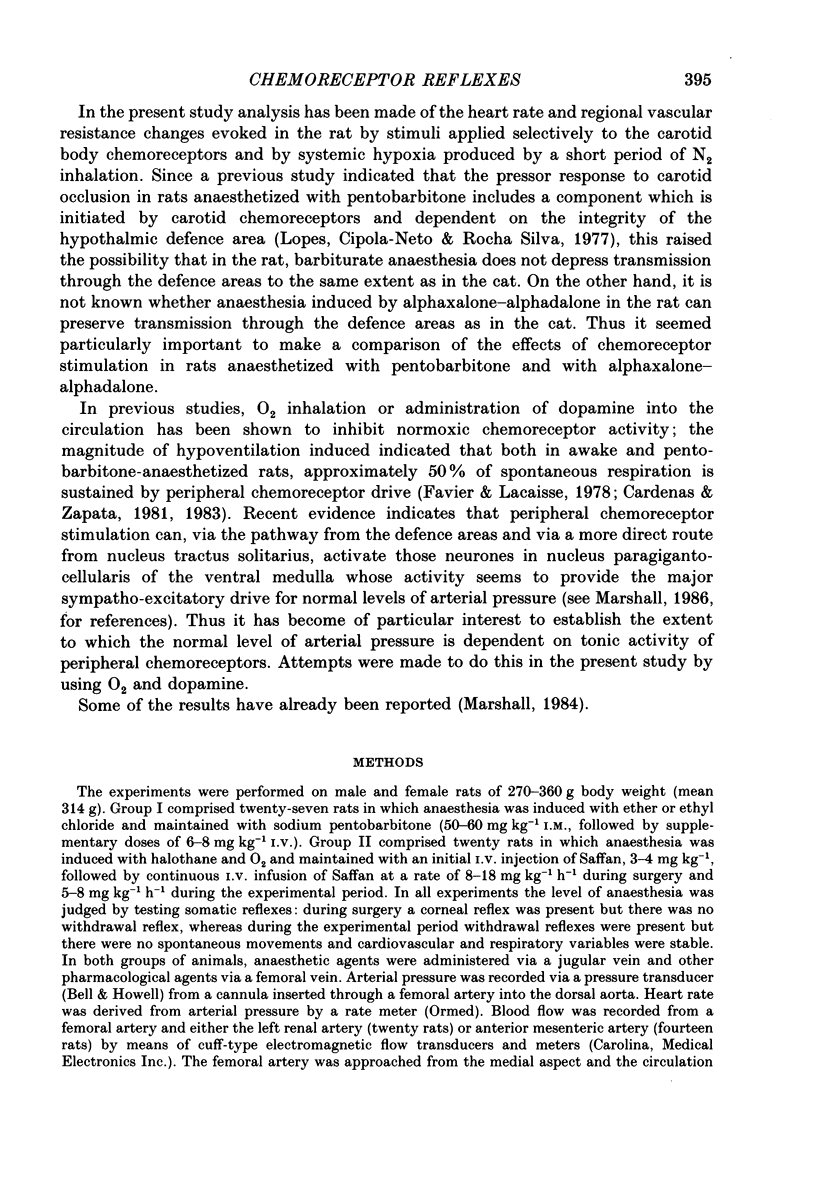
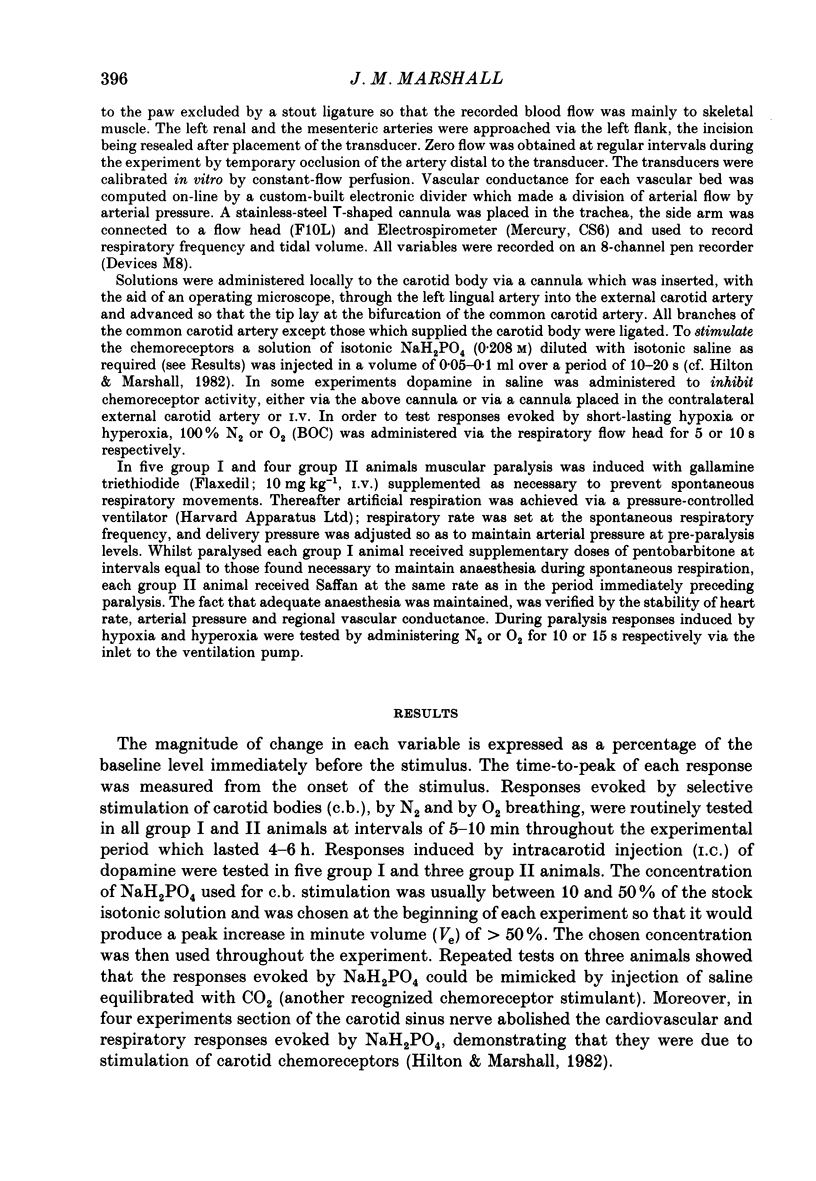
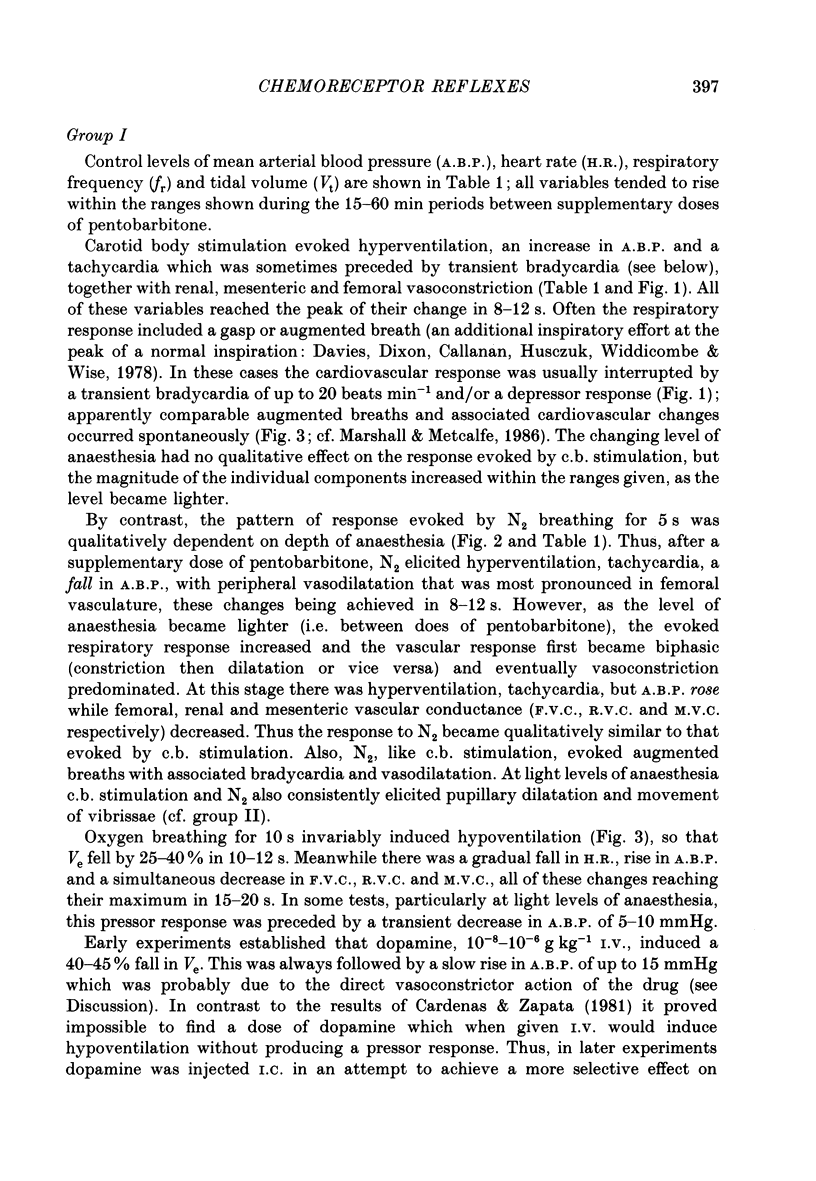
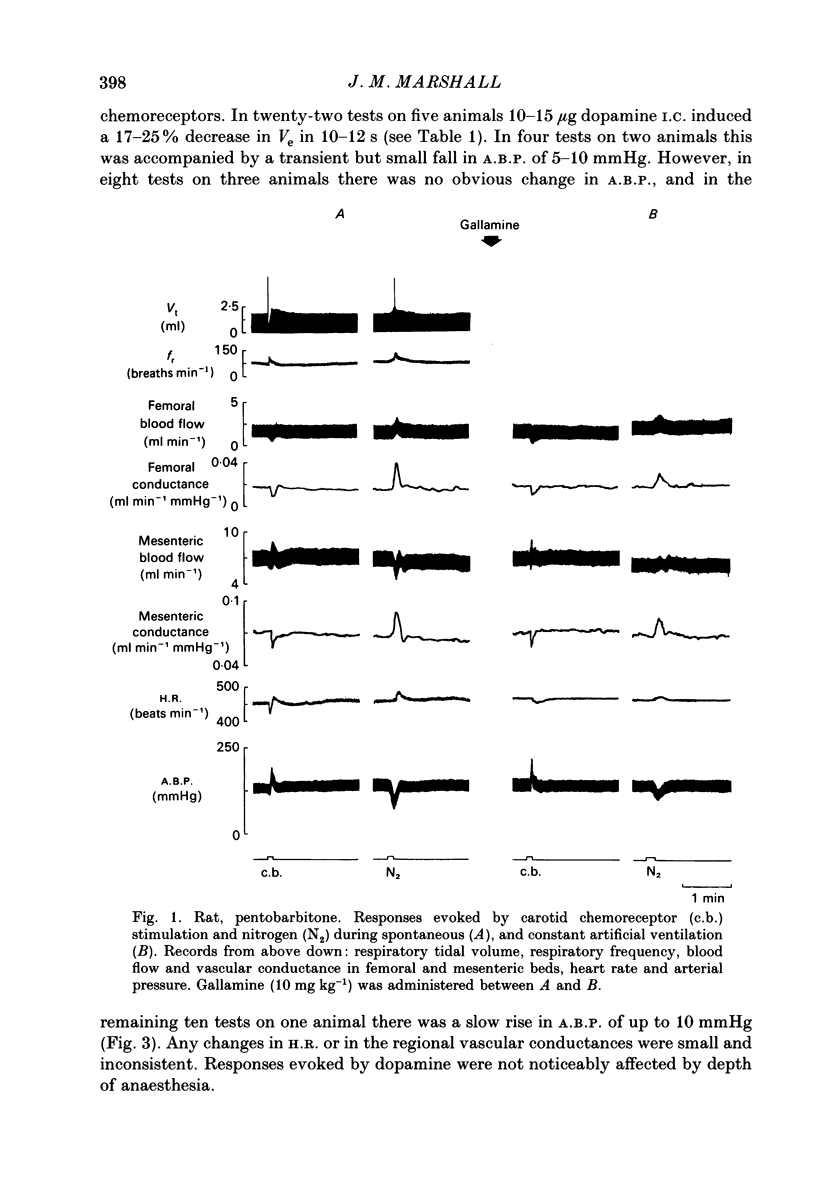
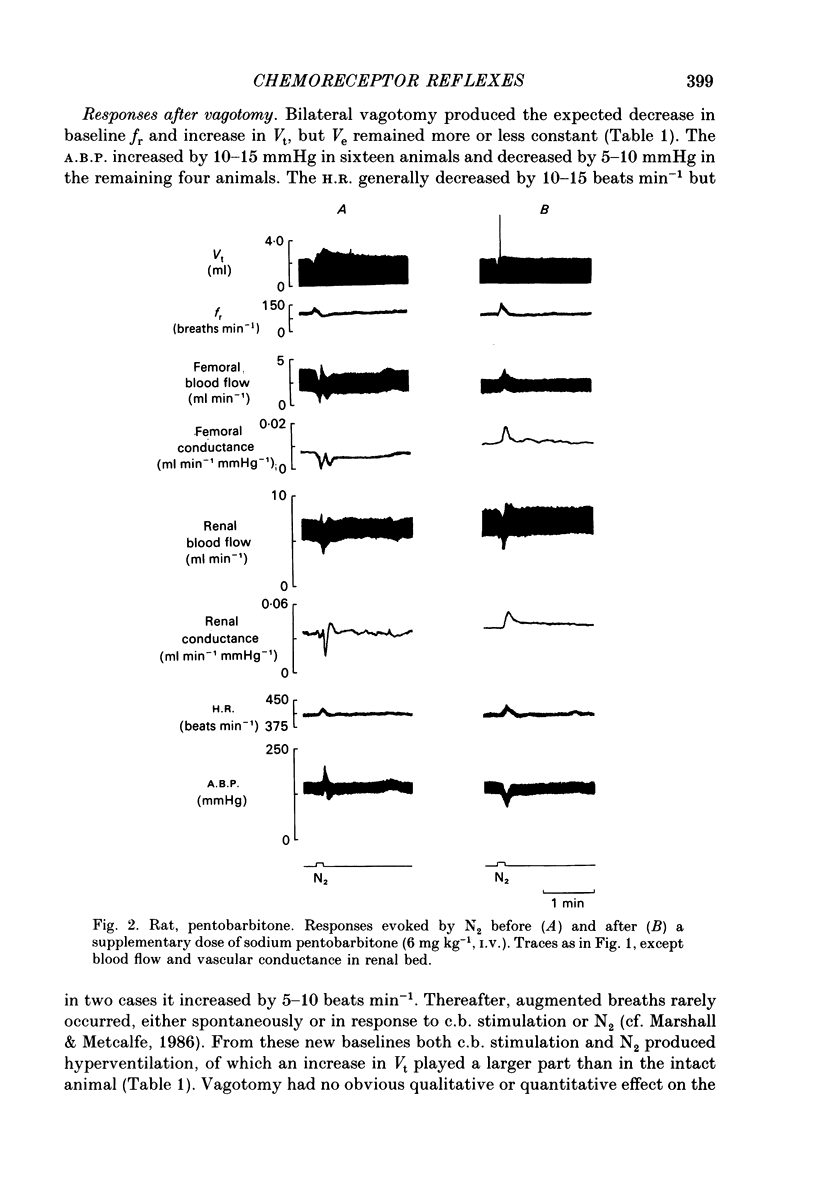
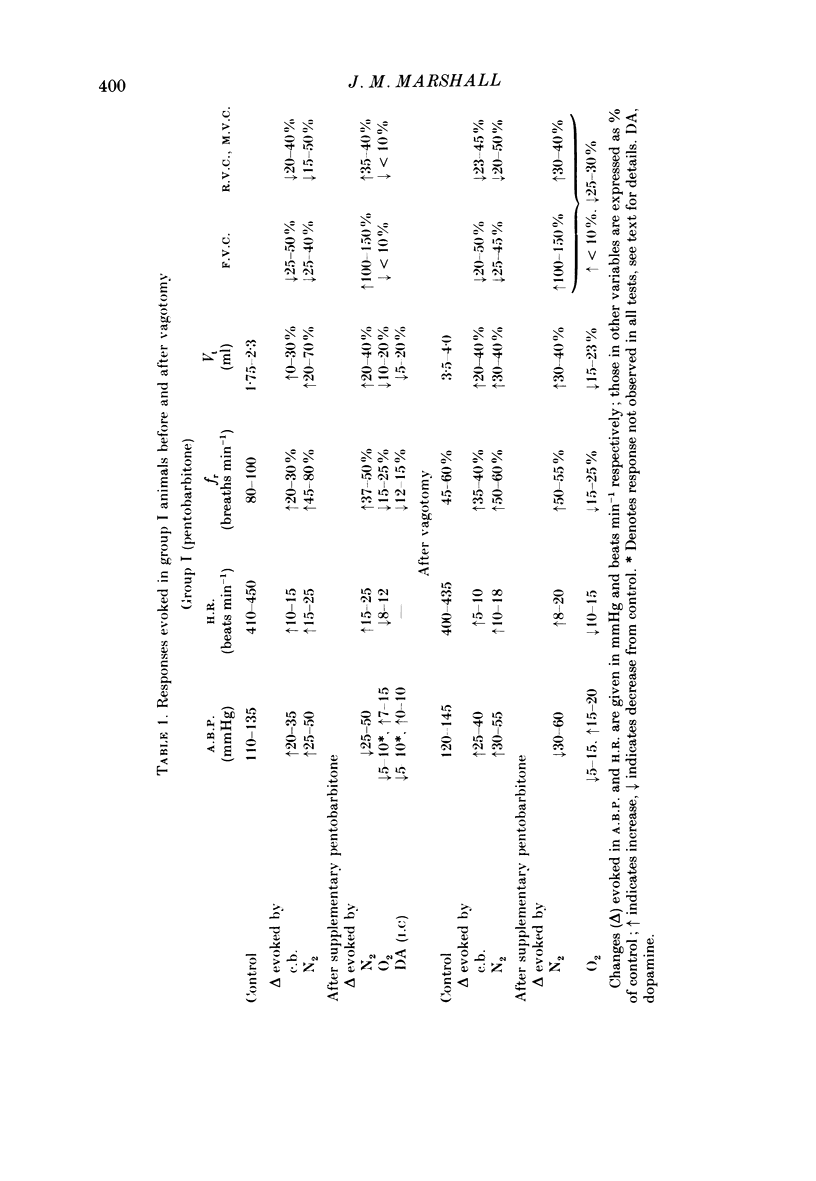
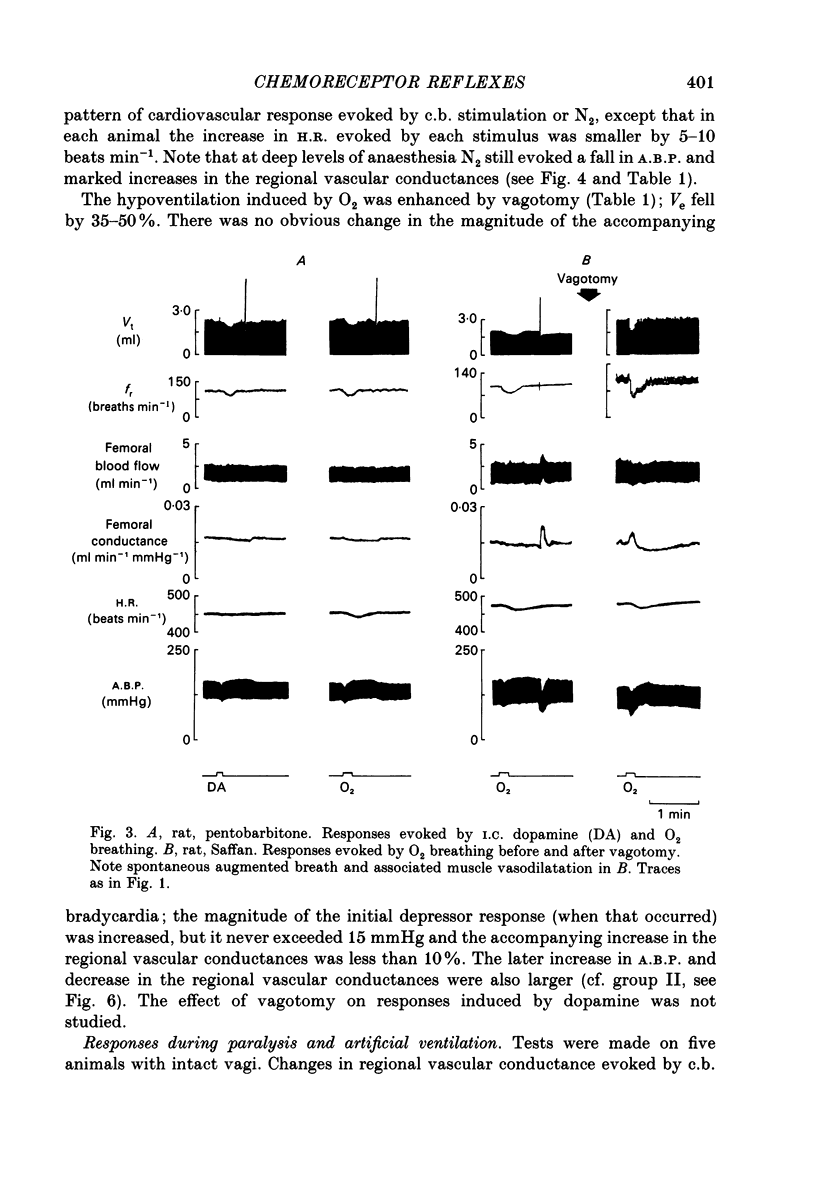
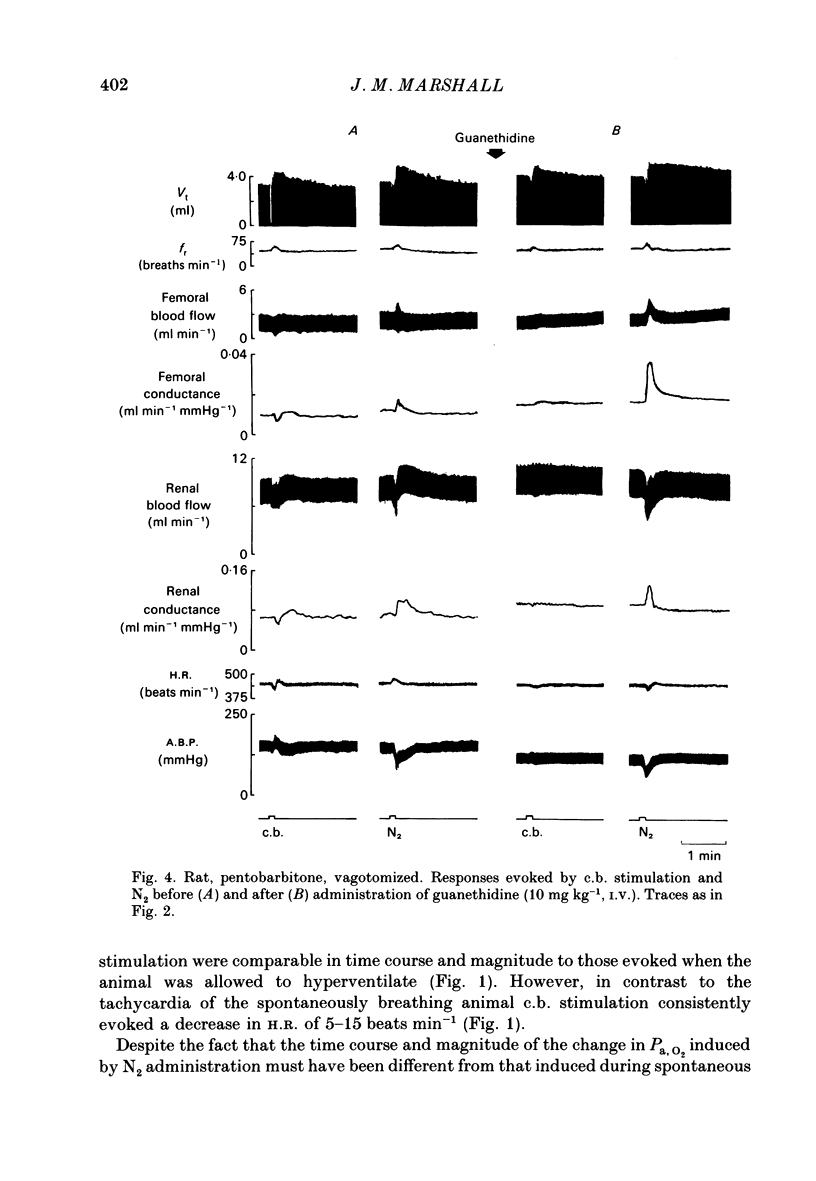
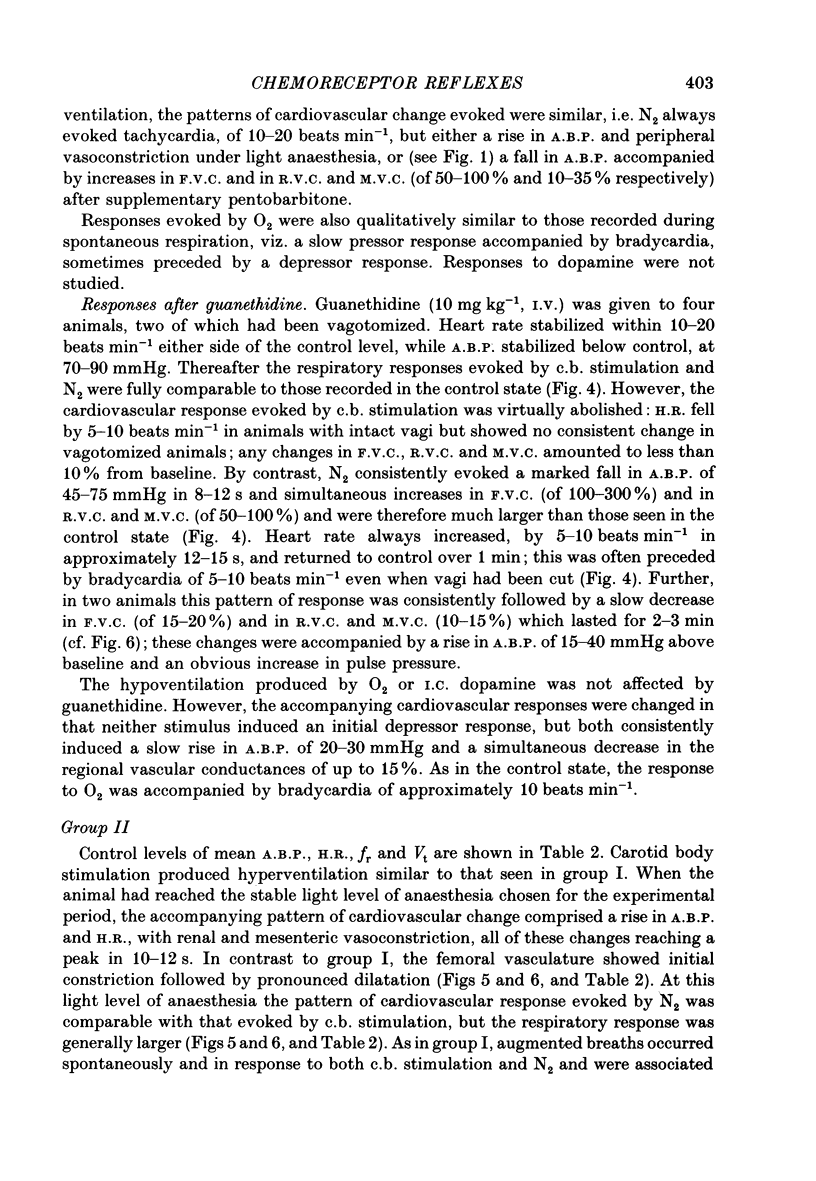
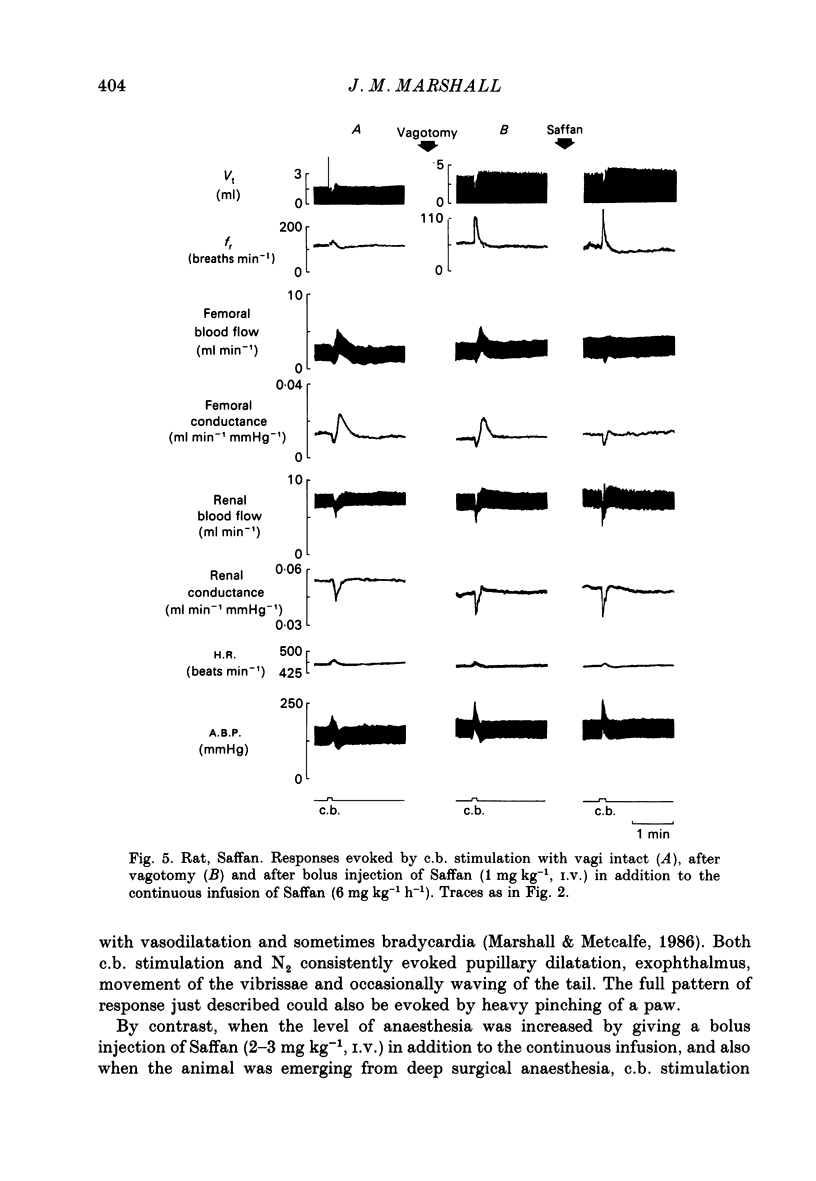
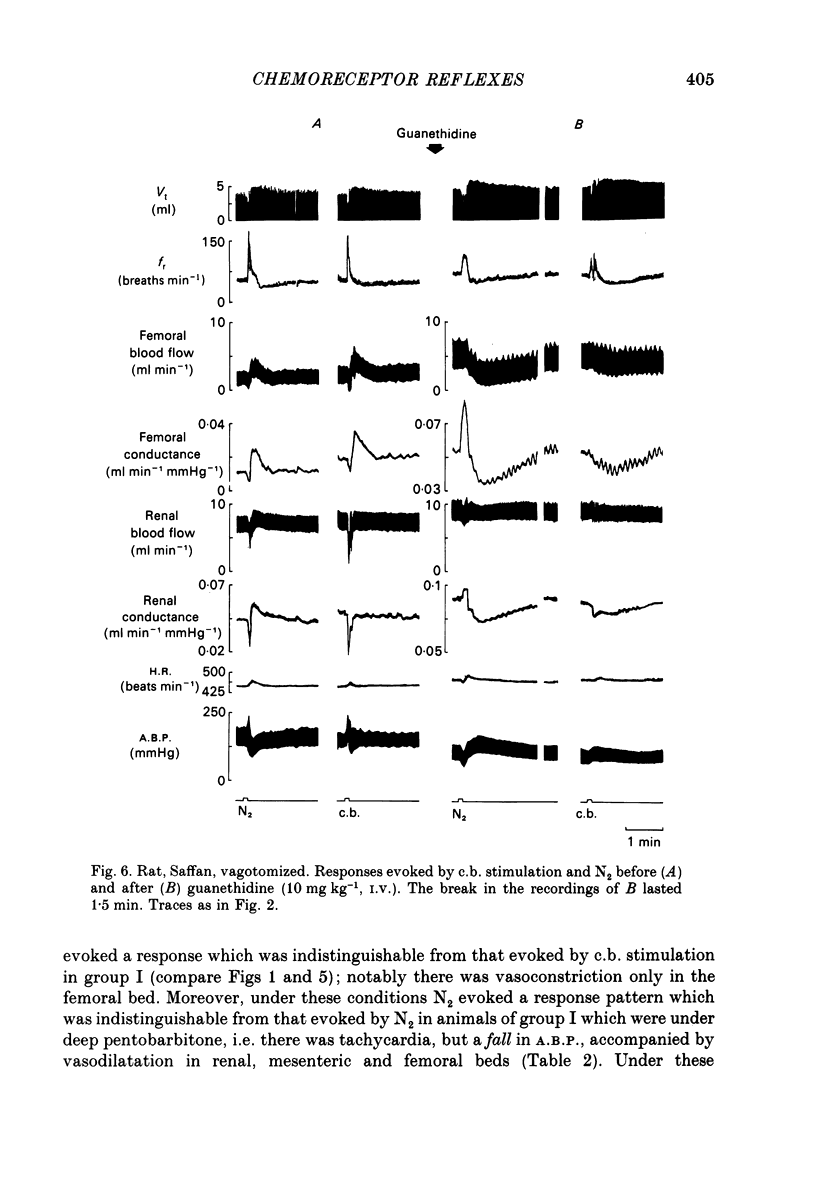
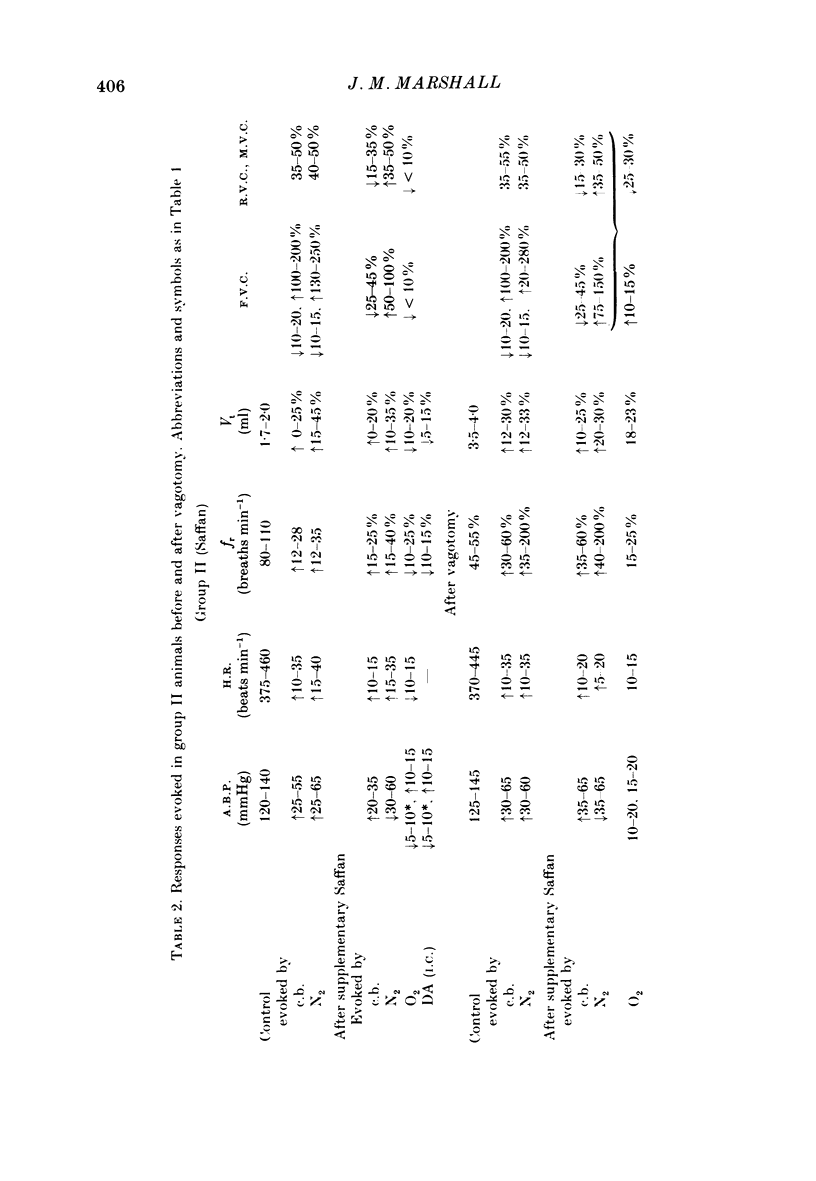
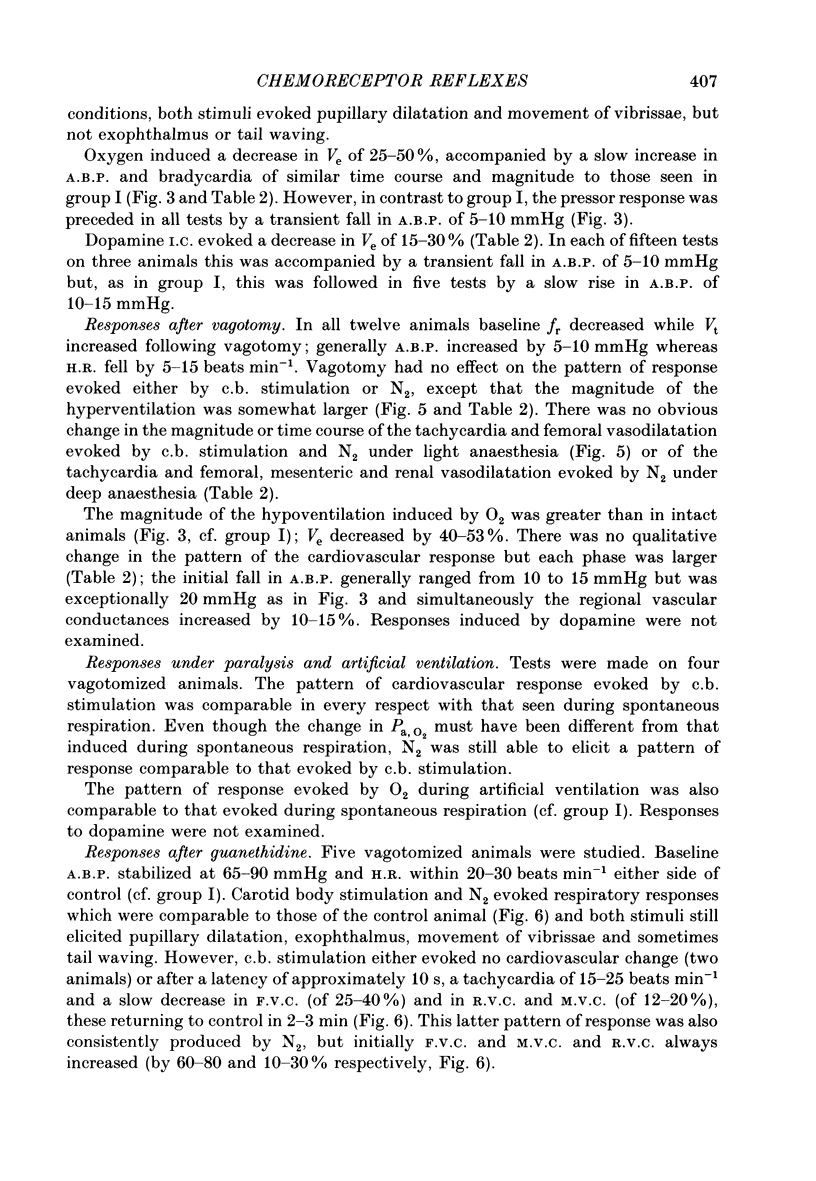

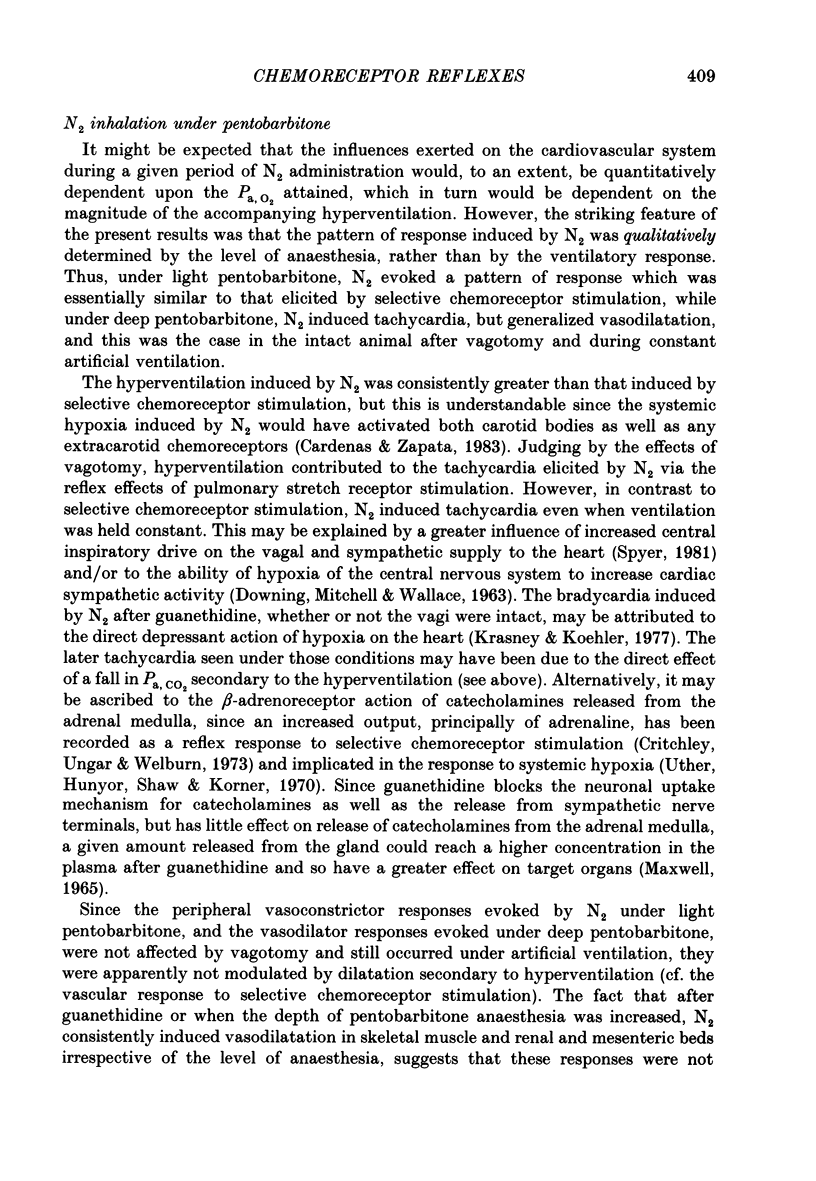
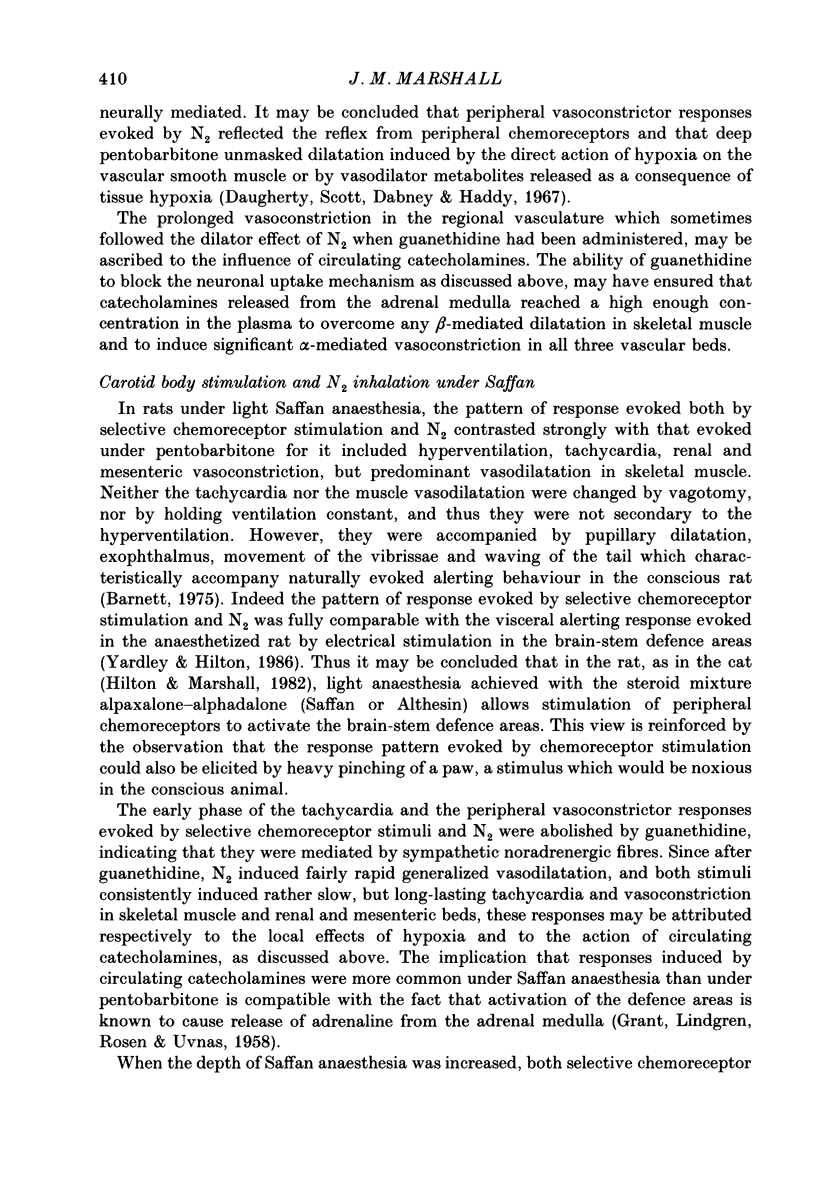
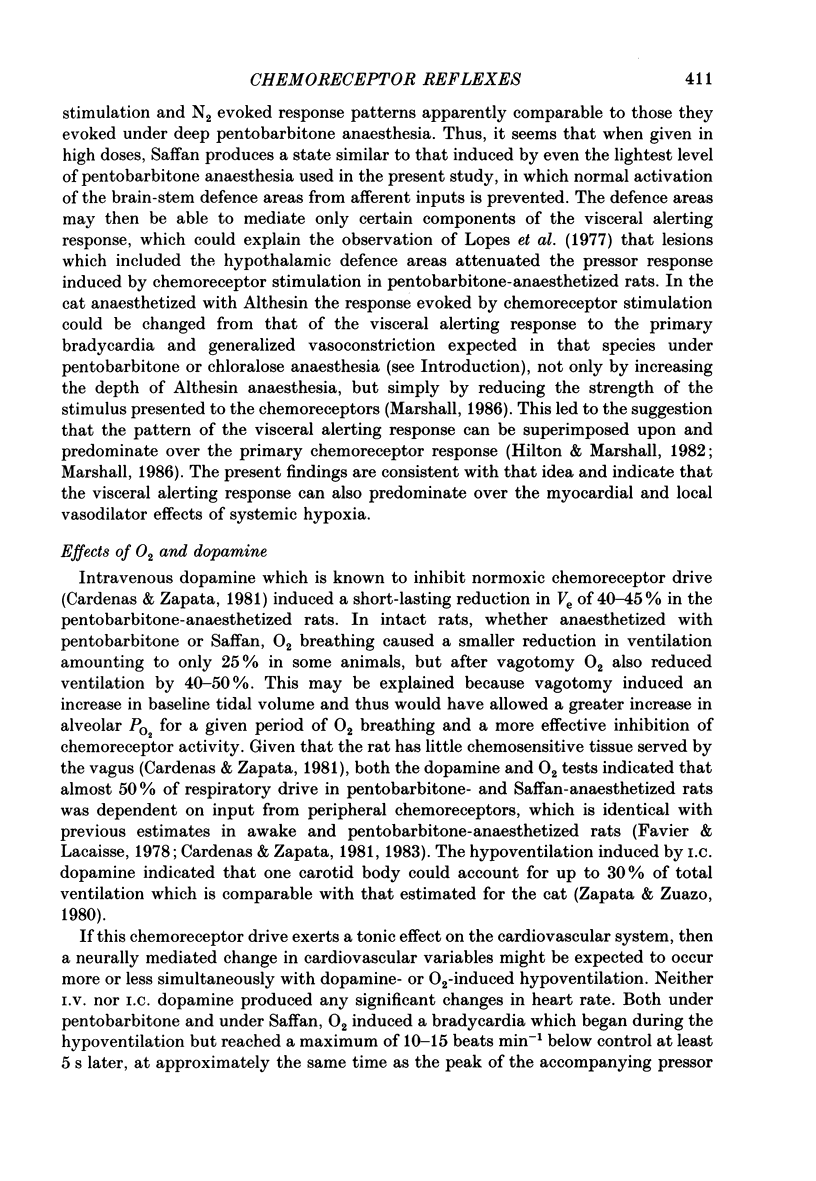
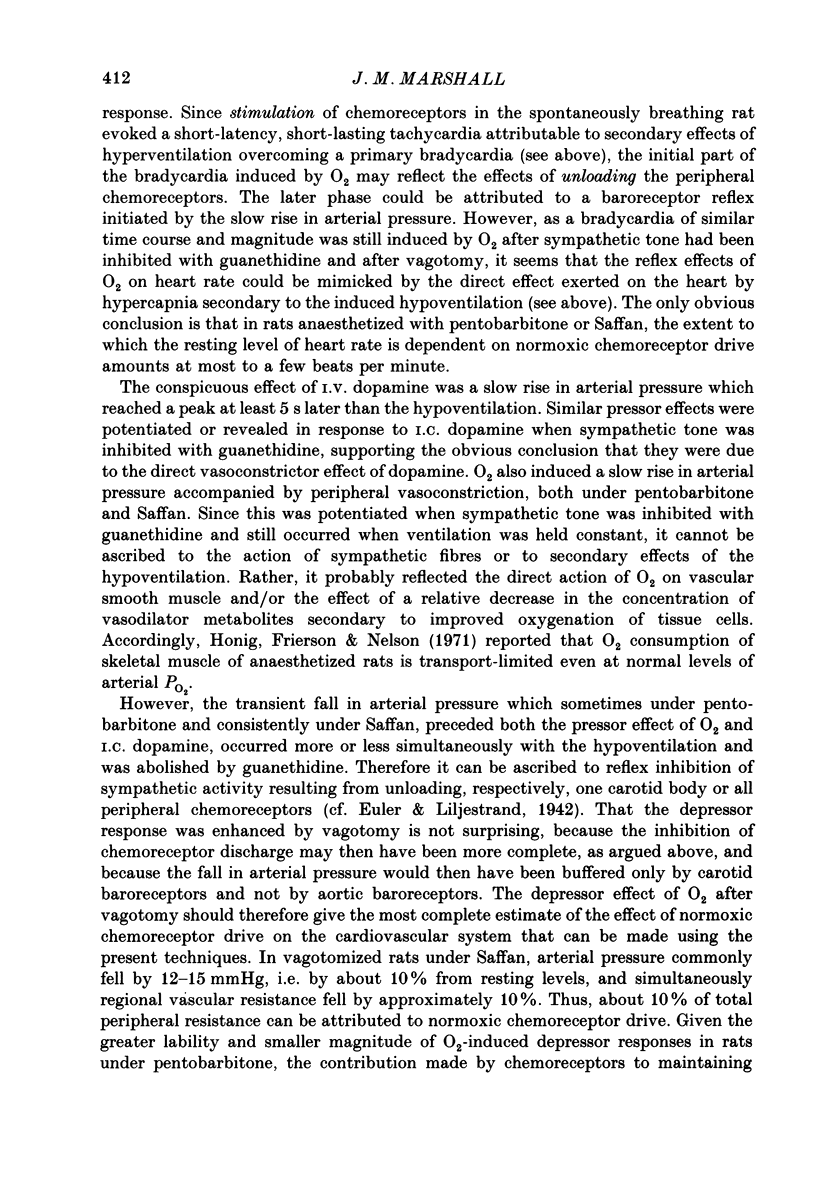
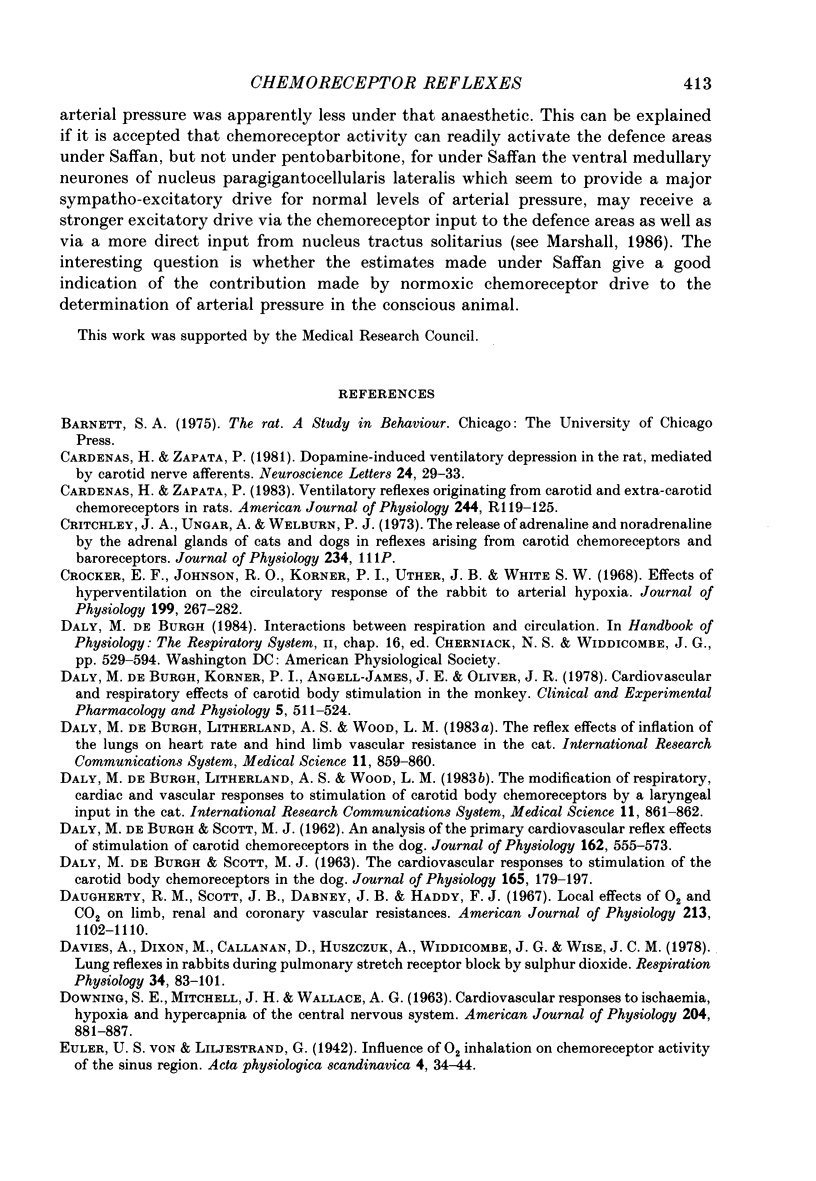
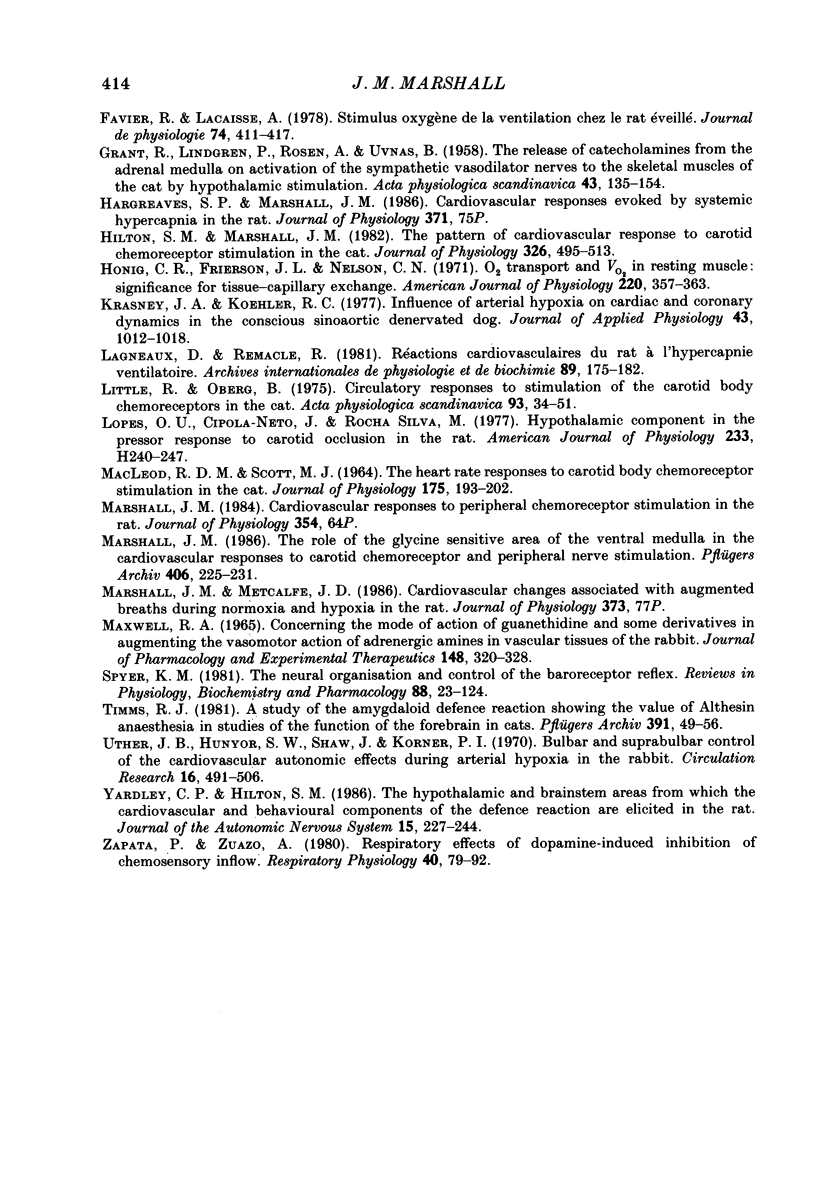
Selected References
These references are in PubMed. This may not be the complete list of references from this article.
- Cardenas H., Zapata P. Dopamine-induced ventilatory depression in the rat, mediated by carotid nerve afferents. Neurosci Lett. 1981 Jun 12;24(1):29–33. doi: 10.1016/0304-3940(81)90354-2. [DOI] [PubMed] [Google Scholar]
- Crocker E. F., Johnson R. O., Korner P. I., Uther J. B., White S. W. Effects of hyperventilation on the circulatory response of the rabbit to arterial hypoxia. J Physiol. 1968 Dec;199(2):267–282. doi: 10.1113/jphysiol.1968.sp008653. [DOI] [PMC free article] [PubMed] [Google Scholar]
- DALY M. D., SCOTT M. J. The cardiovascular responses to stimulation of the carotid body chemoreceptors in the dog. J Physiol. 1963 Jan;165:179–197. doi: 10.1113/jphysiol.1963.sp007051. [DOI] [PMC free article] [PubMed] [Google Scholar]
- DE BURGH DALY M., SCOTT M. J. An analysis of the primary cardiovascular reflex effects of stimulation of the carotid body chemoreceptors in the dog. J Physiol. 1962 Aug;162:555–573. doi: 10.1113/jphysiol.1962.sp006950. [DOI] [PMC free article] [PubMed] [Google Scholar]
- Daugherty R. M., Jr, Scott J. B., Dabney J. M., Haddy F. J. Local effects of O2 and CO2 on limb, renal, and coronary vascular resistances. Am J Physiol. 1967 Nov;213(5):1102–1110. doi: 10.1152/ajplegacy.1967.213.5.1102. [DOI] [PubMed] [Google Scholar]
- Davies A., Dixon M., Callanan D., Huszczuk A., Widdicombe J. G., Wise J. C. Lung reflexes in rabbits during pulmonary stretch receptor block by sulphur dioxide. Respir Physiol. 1978 Jul;34(1):83–101. doi: 10.1016/0034-5687(78)90050-6. [DOI] [PubMed] [Google Scholar]
- Favier R., Lacaisse A. Stimulus oxygène de la ventilation chez le rat éveillé. J Physiol (Paris) 1978;74(4):411–417. [PubMed] [Google Scholar]
- GRANT R., LINDGREN P., ROSEN A., UVNAS B. The release of catechols from the adrenal medulla on activation of the sympathetic vasodilator nerves to the skeletal muscles in the cat by hypothalamic stimulation. Acta Physiol Scand. 1958 Aug 25;43(2):135–154. doi: 10.1111/j.1748-1716.1958.tb01583.x. [DOI] [PubMed] [Google Scholar]
- Hilton S. M., Marshall J. M. The pattern of cardiovascular response to carotid chemoreceptor stimulation in the cat. J Physiol. 1982 May;326:495–513. doi: 10.1113/jphysiol.1982.sp014208. [DOI] [PMC free article] [PubMed] [Google Scholar]
- Honig C. R., Frierson J. L., Nelson C. N. O2 transport and Vo2 in resting muscle: significance for tissue-capillary exchange. Am J Physiol. 1971 Feb;220(2):357–363. doi: 10.1152/ajplegacy.1971.220.2.357. [DOI] [PubMed] [Google Scholar]
- Krasney J. A., Koehler R. C. Influence of arterial hypoxia on cardiac and coronary dynamics in the conscious sinoaortic-denervated dog. J Appl Physiol Respir Environ Exerc Physiol. 1977 Dec;43(6):1012–1018. doi: 10.1152/jappl.1977.43.6.1012. [DOI] [PubMed] [Google Scholar]
- Lagneaux D., Remacle R. Réactions cardio-vasculaires du rat à l'hypercapnie ventilatoire. Arch Int Physiol Biochim. 1981 May;89(2):175–182. doi: 10.3109/13813458109073997. [DOI] [PubMed] [Google Scholar]
- Lopes O. U., Cipola-Neto J., Silva M. R., Jr Hypothalamic component in pressor response to carotid occlusion in the rat. Am J Physiol. 1977 Aug;233(2):H240–H247. doi: 10.1152/ajpheart.1977.233.2.H240. [DOI] [PubMed] [Google Scholar]
- MACLEOD R. D., SCOTT M. J. THE HEART RATE RESPONSES TO CAROTID BODY CHEMORECEPTOR STIMULATION IN THE CAT. J Physiol. 1964 Dec;175:193–202. doi: 10.1113/jphysiol.1964.sp007511. [DOI] [PMC free article] [PubMed] [Google Scholar]
- MAXWELL R. A. CONCERNING THE MODE OF ACTION OF GUANETHIDINE AND SOME DERIVATIVES IN AUGMENTING THE VASOMOTOR ACTION OF ADRENERGIC AMINES IN VASCULAR TISSUES OF THE RABBIT. J Pharmacol Exp Ther. 1965 Jun;148:320–328. [PubMed] [Google Scholar]
- Marshall J. M. The role of the glycine sensitive area of the ventral medulla in cardiovascular responses to carotid chemoreceptor and peripheral nerve stimulation. Pflugers Arch. 1986 Feb;406(2):225–231. doi: 10.1007/BF00586687. [DOI] [PubMed] [Google Scholar]
- Spyer K. M. Neural organisation and control of the baroreceptor reflex. Rev Physiol Biochem Pharmacol. 1981;88:24–124. [PubMed] [Google Scholar]
- Timms R. J. A study of the amygdaloid defence reaction showing the value of Althesin anaesthesia in studies of the functions of the fore-brain in cats. Pflugers Arch. 1981 Jul;391(1):49–56. doi: 10.1007/BF00580694. [DOI] [PubMed] [Google Scholar]
- Uther J. B., Hunyor S. N., Shaw J., Korner P. I. Bulbar and suprabulbar control of the cardiovascular autonomic effects during arterial hypoxia in the rabbit. Circ Res. 1970 Apr;26(4):491–506. doi: 10.1161/01.res.26.4.491. [DOI] [PubMed] [Google Scholar]
- Yardley C. P., Hilton S. M. The hypothalamic and brainstem areas from which the cardiovascular and behavioural components of the defence reaction are elicited in the rat. J Auton Nerv Syst. 1986 Mar;15(3):227–244. doi: 10.1016/0165-1838(86)90066-4. [DOI] [PubMed] [Google Scholar]
- Zapata P., Zuazo A. Respiratory effects of dopamine-induced inhibition of chemosensory inflow. Respir Physiol. 1980 Apr;40(1):79–92. doi: 10.1016/0034-5687(80)90006-7. [DOI] [PubMed] [Google Scholar]
- de Burgh Daly M., Korner P. I., Angell-James J. E., Oliver J. A. Cardiovascular and respiratory effects of carotid body stimulation in the monkey. Clin Exp Pharmacol Physiol. 1978 Sep-Oct;5(5):511–524. doi: 10.1111/j.1440-1681.1978.tb00704.x. [DOI] [PubMed] [Google Scholar]


